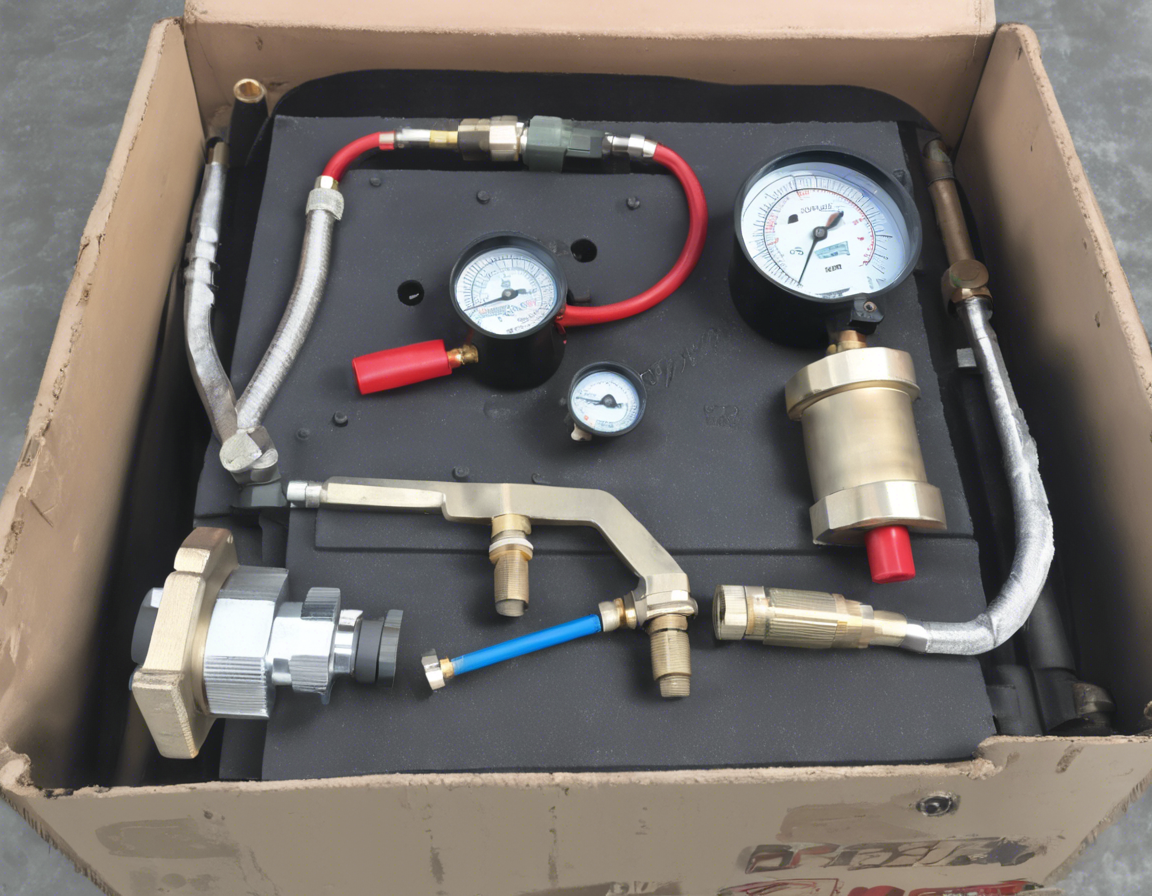Engines can develop various issues over time, ranging from worn piston rings to damaged valves. When facing engine problems, it’s important to diagnose the root cause accurately to plan for effective repairs. One tool that can help in this process is a cylinder leak down tester. This device allows you to assess the condition of your engine’s cylinders by identifying leaks and measuring their severity. In this comprehensive guide, we will walk you through the step-by-step process of using a cylinder leak down tester to diagnose engine problems accurately.
Understanding the Cylinder Leak Down Tester
A cylinder leak down tester is a diagnostic tool designed to gauge the health of an engine’s cylinders by measuring the percentage of leakage. It consists of a pressure gauge, a regulator, and a connection hose that attaches to the spark plug hole. By pressurizing the cylinder and monitoring the pressure drop, you can determine the extent of leakage and pinpoint potential issues.
Step-by-Step Guide to Using a Cylinder Leak Down Tester
-
Prepare Your Vehicle: Park your vehicle in a well-ventilated area with the engine turned off and the key removed from the ignition.
-
Locate the Spark Plug: Identify the spark plug of the cylinder you want to test and carefully remove it using a socket wrench.
-
Attach the Tester: Connect the hose of the leak down tester to the spark plug hole securely, ensuring a tight seal to prevent air leakage.
-
Set the Regulator: Adjust the regulator to the recommended pressure specified for your engine. This is typically around 90 psi, but refer to your vehicle’s manual for the exact pressure.
-
Pressurize the Cylinder: Use the tester to introduce pressurized air into the cylinder. Monitor the pressure gauge to note the initial reading.
-
Monitor Leakage: Observe the pressure gauge for a few minutes to see how much pressure drops. A significant drop indicates leakage within the cylinder.
-
Identify Leakage Points: If there is substantial pressure loss, listen for hissing sounds around the intake, exhaust, or cooling system. This can help pinpoint the exact location of the leak.
-
Interpret the Results: Based on the percentage of leakage and the location of the leak, you can diagnose potential issues such as worn piston rings, damaged valves, or a blown head gasket.
Common Engine Problems Detected Using a Cylinder Leak Down Tester
- Worn Piston Rings: Excessive leakage during the test can indicate worn piston rings, leading to poor compression.
- Valve Seal Issues: Leaky valves can cause compression loss and affect engine performance.
- Head Gasket Failure: A blown head gasket often results in pressure loss between cylinders.
- Cracked Cylinder Walls: Severe leakage may suggest cracks in the cylinder walls, necessitating immediate attention.
Benefits of Using a Cylinder Leak Down Tester
- Accurate Diagnosis: Pinpoints specific engine problems with precision, allowing for targeted repairs.
- Preventive Maintenance: Helps detect potential issues early, preventing major engine damage.
- Cost-Effective: Saves money by addressing problems before they escalate and cause extensive damage.
- Enhances Engine Performance: By identifying and fixing issues, the tester helps improve overall engine performance and efficiency.
Frequently Asked Questions (FAQs) About Using a Cylinder Leak Down Tester
- How does a cylinder leak down tester differ from a compression tester?
-
A compression tester measures the maximum pressure a cylinder can generate, while a leak down tester assesses how much of that pressure is being lost, pinpointing specific areas of leakage.
-
At what pressure should I perform a leak down test?
-
The recommended pressure for conducting a leak down test is typically around 90 psi, but refer to your vehicle’s manual for the specific pressure requirement.
-
Can a leak down tester be used on all types of engines?
-
Yes, a leak down tester is versatile and can be used on gasoline, diesel, and rotary engines to diagnose cylinder issues.
-
How often should I perform a leak down test on my engine?
-
It’s recommended to conduct a leak down test as part of regular maintenance or whenever you suspect engine problems such as misfires, rough idling, or decreased performance.
-
What are some common signs that indicate the need for a leak down test?
- Symptoms such as loss of power, excessive oil consumption, white smoke from the exhaust, or irregular engine noises can signal the need for a leak down test to identify underlying issues.
In conclusion, utilizing a cylinder leak down tester can be instrumental in diagnosing engine problems accurately and efficiently. By following the step-by-step guide outlined in this article and interpreting the results carefully, you can pinpoint cylinder issues and take necessary actions to restore your engine’s performance. Remember, regular maintenance and timely diagnosis play a crucial role in ensuring the longevity and efficiency of your vehicle’s engine.

